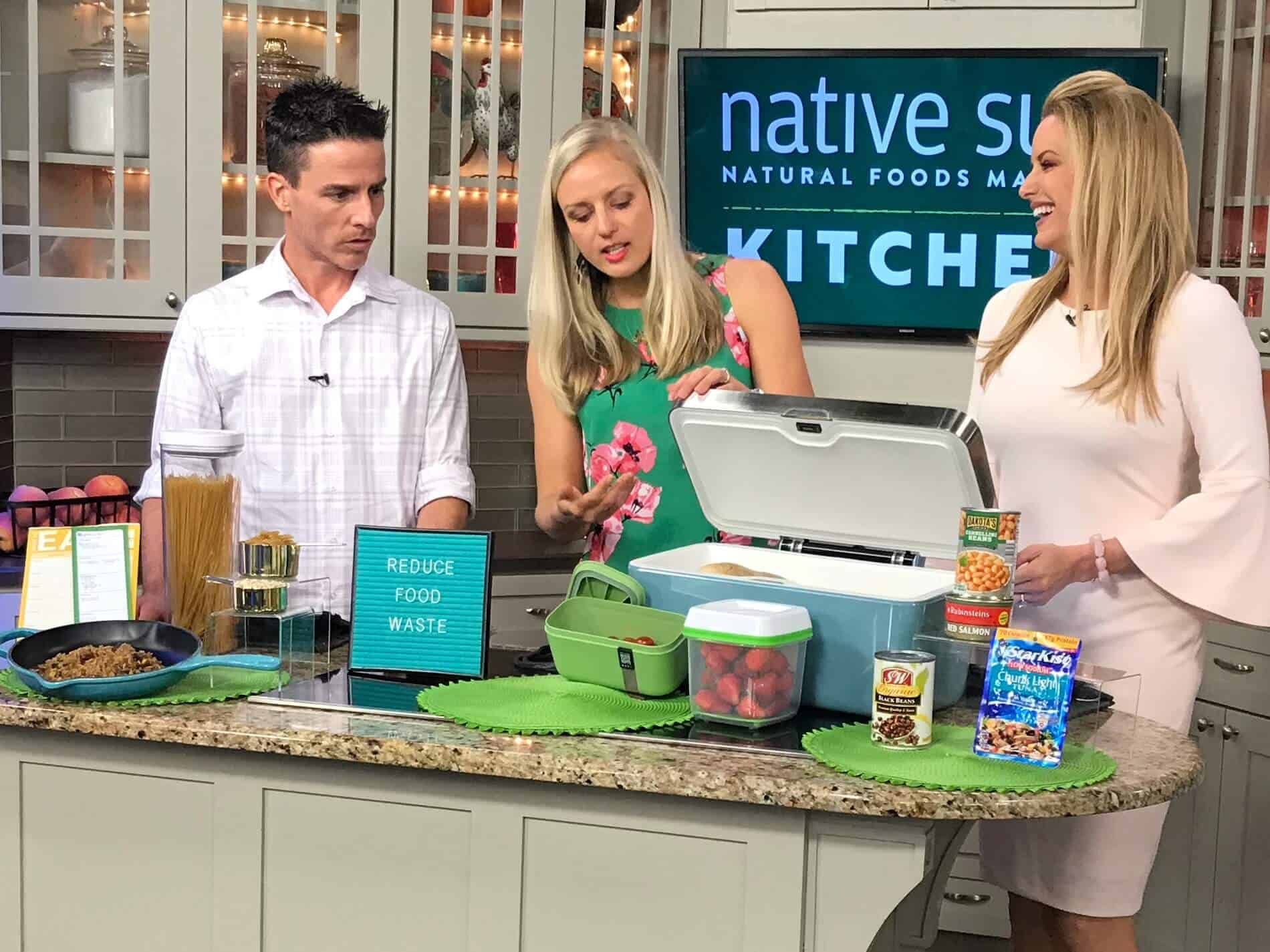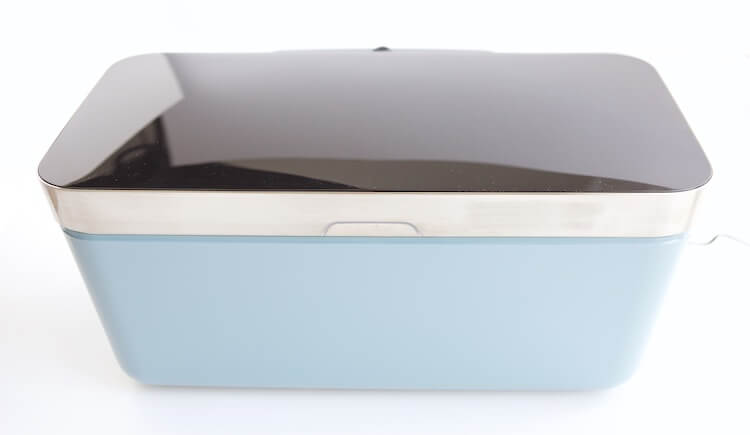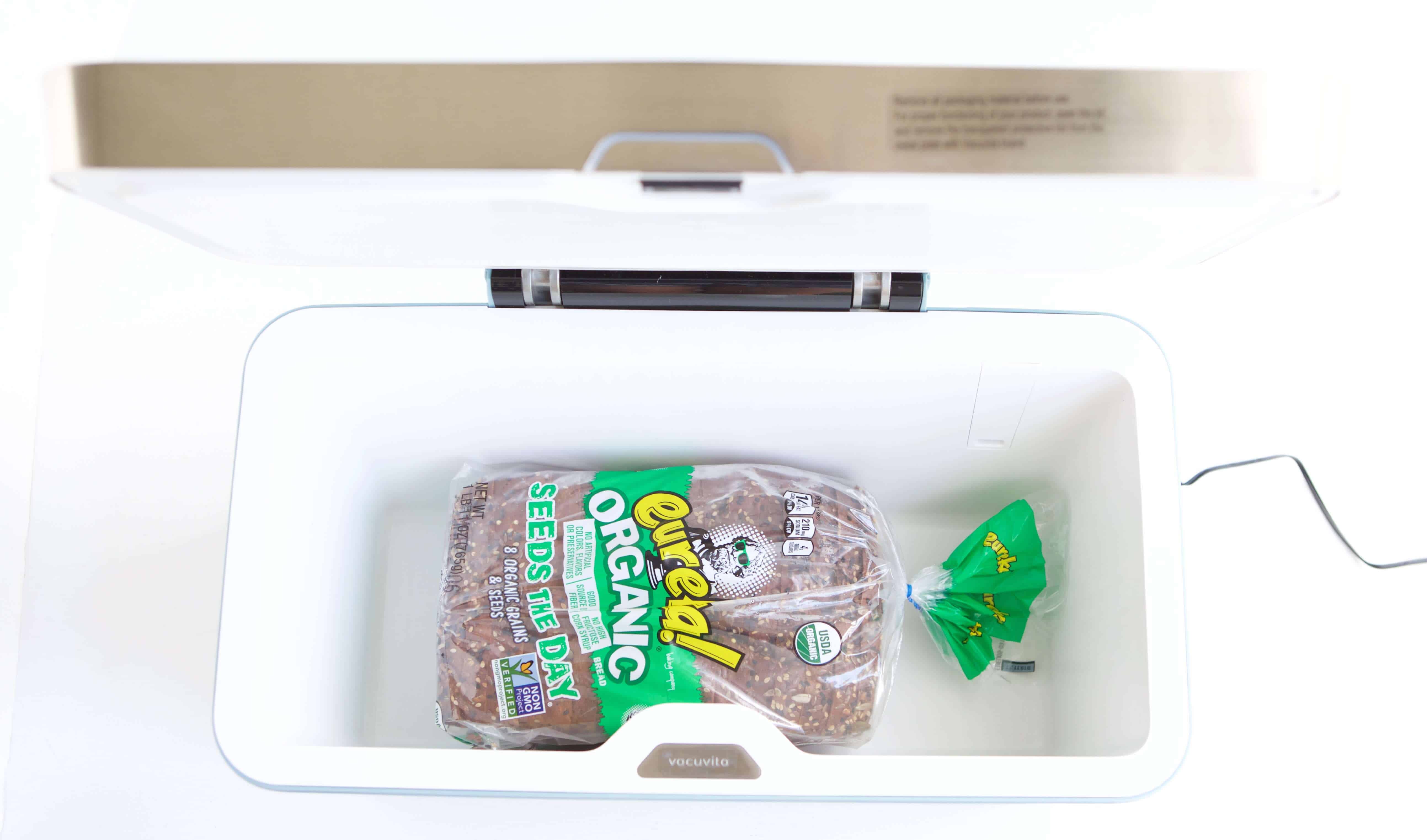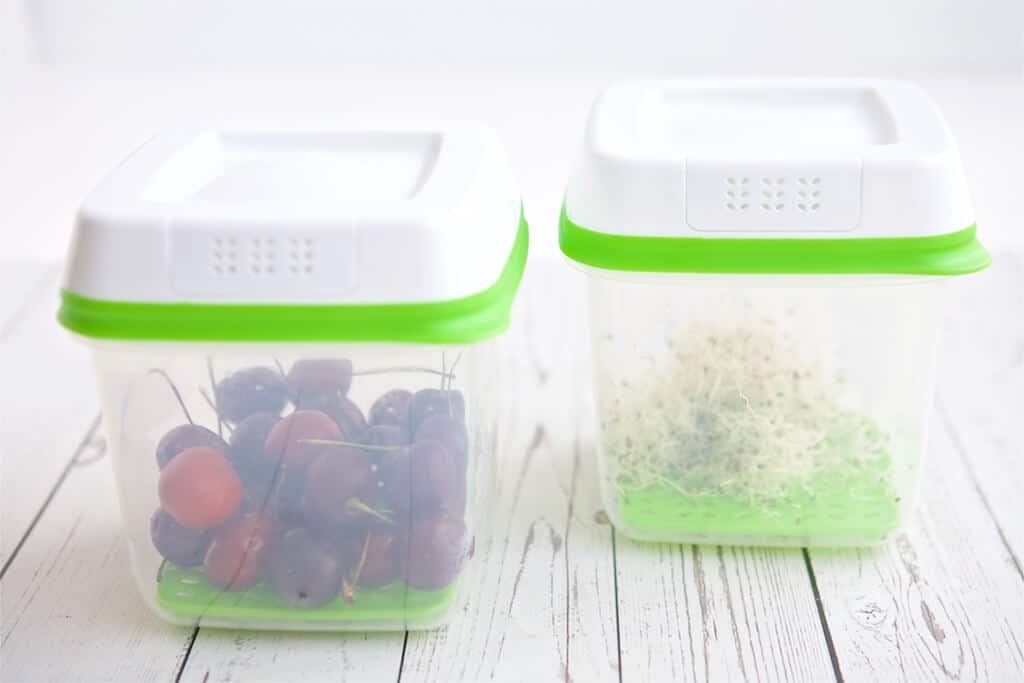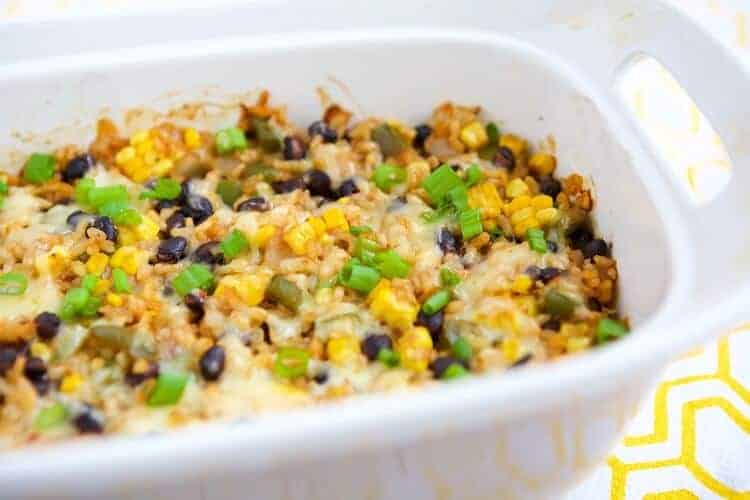
Reducing food waste is a topic that is beginning to be more important to me. While on the surface it may not look like a direct connection to nutrition and health, I assure you it most certainly is.
Jump to:
I have become more aware of the issue of food waste in the past couple of years thanks to new colleagues I've met and more awareness in the field of nutrition. It's honestly a problem that's easy to keep at arm's length because I'm able to purchase the food I need and want on a regular basis. It's very easy for me to pitch food about to go bad without thinking twice. I've also truly pondered how reducing food waste in my own kitchen really makes a difference. It can feel like an uphill battle sometimes, convincing those around you to care too.
Food Waste Stats
Food waste, and the many issues that arise from it, is a real thing that deserves your attention. There are some really compelling statistics available about food waste that I think we all need to know and really ponder:
- The Food and Agriculture Organization of the United Nations estimates that 1.3 billion tons of food are wasted each year. This is equivalent to about ⅓ of the total food available for human consumption. (Source) Let this one sink in for a minute. What you purposefully just threw out ⅓ of all the food you bought from the store each week -- just chucked it straight into the trash. Crazy, right?! Well, that, in theory, is happening in each of our kitchens all the time.
- The amount of food wasted per person, per year in the US is 240 lbs. This includes both home and restaurant waste. (Source)
- If we were able to reduce our national food waste by just 15%, it would provide enough food to feed more than 25 million Americans annually. (reference available) And there are a lot of Americans who do truly need food.
- It's important to consider the whole life cycle of food to truly understand the impact of wasted food. You might just be throwing away an apple, but with it all the resources - water, greenhouse gas emission, energy, manpower, transportation, storage -- that were used to produce it.
- If none of the above gets you, which I understand, just think about food waste simply in this way: If you don't eat the food then it can't help you be healthy. It just because garbage, which is sad.
Lately, it's starting to pain me to toss food and I'm working on strategies I can easily implement to reduce food waste. I certainly want to do my part to take care of the food supply, help all people have access to food, and protect the planet. We are all busy people, trying to feed ourselves and others, sometimes just surviving the day. If kitchen conservation isn't quick and simple, it's going to be hard to get started.
Reducing food waste is a two-fold process
First, it starts by developing a greater appreciation of the food system -- how food is produced and the power it can have in our bodies and on our health. Second, it's implementing strategies to reduce food waste at a personal level and then hopefully a community level.
I talked about all these tips on TV segment for First Coast Living and you can view the segment HERE.
Ready to get on board with kitchen conservation? Here are some of my Kitchen Conversation strategies for busy people, focusing on reducing waste.
#1 - Cook only what you Need
For me, this has been the strategy that is making the biggest impact on my meals. Before making a meal I think about how much food I actually need to prepare for our family. Often I am eyeballing every measurement but this leads to cooking a lot of excess.
Next time you make a common dinner recipe, think about how much was left over last time. Adjust your ingredients to make only what you need. What's the worst thing that could happen? You eat it all up and someone needs a PB & J. Big deal.
I looked around for tools to help better estimate portions and THIS AMAZING TOOL gets my first prize for best idea. I am always making too much pasta, but this individual basket that hangs on the side of your pot can change that forever. Brilliant!
#2 - Use Better Storage Options
In many counseling and speaking sessions I hear people give one common complaint about buying more fruits and vegetables: they hate throwing them out when they spoil. Ugh! I know. It's throwing money in the garbage!
In the past few months I've experimented with this high-tech tool that is changing the food storage game.
I was given a free Vacuvita Home Base foodsaver in exchange for a review, which I am excited to share with you.
The Vacuvita home base foodsaver is a beautifully designed vacuum-sealing box that stores food to prevent them from spoiling. The company promises it keeps food fresher up to 5 times longer than traditional storage methods. It sits on your counter and is easily accessible to pop in and out of to grab whatever food is stored inside. With the the touch of the button, it opens, and by simply closing the top, it automatically reseals the box, eliminating the air. This product is rethinking the use of a vacuum sealer. I call it the space box because that's what it sounds like when you open and close it.
Another cool feature of the Vacuvita is the vacuum adapter and tube attachment. It very easily attaches to the home base and works with both storage containers and bags to vacuum seal. I have been playing around with these accessories and love the vacuum bags.
The storage containers are for use with foods that should be stored in the refrigerator or freezer or separate from other foods (like coffee beans). They also have an attractive design and are easy to use. I like that you can store fresh food in them, like berries, and quickly reseal the container after each use. So far, I've seen them effectively keep berries fresh and mold free.
Vacuvita also has a corresponding, free app to help track what food is stored where and when to use it by. I think this is a brilliant idea. I have been fiddling with the app to see how it helps. I like that I can pull up the food I have stored in the box and track their time in storage.
The last super power this box possesses is the power to marinade quickly and assist in sous vide cooking. I am a chronic forgot-marinade-ahead-of-time person so being able to use the vacuum seal bags and containers for marinating will be a lifesaver, especially come grill season.
Overall I really enjoyed trying this product out. To help you decide if a Vacuvita is right for you, here's a good ole fashion list of pros and cons.
Pros
- It really does extend the life of fresh produce, particularly tomatoes. I had tomatoes in this box for over a week and half and they were still firm, juicy and mold free. It was really quite amazing. This makes me say "SOLD!" and I'm hoping I never have to throw out a rotten tomato again.
- The vacuum cord is easy to attach and quickly use. I really like the accompanying storages boxes because they are reusable and quick to reseal. This also make this box more than a uni-function appliance.
- The vacuum bags work great and enable frost-free preserving of food in the freezer. They can also be used to greatly cut down the time needed to marinate.
- The storage boxes are great for storing fresh produce in the fridge with the vacuum sealer. This can greatly extend the shelf life and prevent food waste.
- The design is very attractive and modern.
Cons
- The home base box is big and takes up a lot of counter space. I'll be honest, it's final resting place has been a topic of heated discussion between me and Coach.
- The box emits a blue light at all times it's being used. The only problem with this, at least for us, is that we see the light from our bedroom at night and it's distracting.
- The storage box is not for everything. For instance, I tried putting an avocado in there and it didn't seem to help it from ripening too quickly. I also tried bananas in the box and didn't notice a big difference there either.
All in all, I think this is a really cool small kitchen appliance to help preserve food and prevent food waste. If you need to upgrade your vacuum sealer or have never owned a vacuum sealer, I'd say go for this one. It's nice that you get more than a traditional vacuum sealer and reusable containers. You can buy everything Vacuvita easily on Amazon.
#3 - Fresh Produce Savers
I can say with 100% confidence that these type of food storage containers are worth the money and work. I'm talking fresh strawberries that last 5 days in the fridge and fresh greens that last a week or more.It's rather amazing. I store everything produce in these boxes like greens, berries, beets, celery, cucumbers and have seem them extend the shelf life. They are worth the money and I think the set of 3 boxes listed below is a great starter set.
#4 - Use your Freezer
I've been a vacuum-sealer (if that's a thing) for many, many years and found it to be a great way to reduce food waste. If leftovers can be frozen, I'll vacuum seal it. Also, anytime I can make a double batch of something that easily reheats, I do and vacuum seal it to freeze for a later meal. I do this with ground meats, cooked beans, cooked grains, fresh vegetables for roasting (like hard squashes), and extra fresh, chopped veggies like corn, peppers and onion. In fact, Coach often makes fun of me for what I pull out of the freezer. I don't care because it helps me pull off meals super quick and waste less food.
Some of my favorite recipes that use frozen ingredients are: Vegetarian Rice & Bean Casserole, Strawberry Orange Green Smoothie Recipe, and Hidden Honey Snack Bar Recipe.
#5 - Donate instead of throw away
Lately I have been reorganizing my kitchen and getting rid of any excess I don't use. (This is all thanks to my dear friend Carlene at Healthfully Ever After btw.) When it came time to clean out my pantry, instead of thinking of what can I throw out, I asked myself "what can I donate?" I ended up with very little in my trash can and a big bag of food to donate to my local food pantry.
When clearing out food, know that the "use by" and "best by" dates are NOT expiration dates. Food can still be good and safe beyond that date; it's just not guaranteed.
So if you are never going to eat that food, really, donate it. Someone can and WILL benefit from that food.
#6 - Participate in food production
Whenever possible, do something to participate in the food production process. Whether it's as simple as growing a pot of tomatoes in the summer, to visiting farms or volunteering, seeing how much work actually goes into producing food gives you a much deeper appreciation when you eat it.
For example, I have 2 mature blueberry bushes in my backyard. (They're pretty easy to grow btw.) It takes a good 4 months for the berries to ripen from flowers. I check them almost every day and I cannot wait to eat them. While the blueberries I buy in the store seem much more instant, I force myself to remember that each of those berries took just as long to grow and should be as deeply appreciated.
#7 - Small steps matter
No matter where you are mentally in the food waste discussion, I encourage you that you can do something to make a difference. Don't be paralyzed by the big ideas that seem unattainable. Simply begin the journey of caring and waste a little less. We can do this, together!
How do you practice kitchen conservation by reducing food waste? Leave a comment below.
















